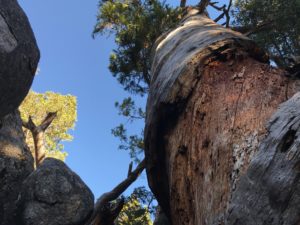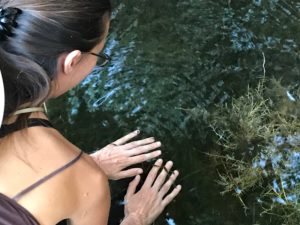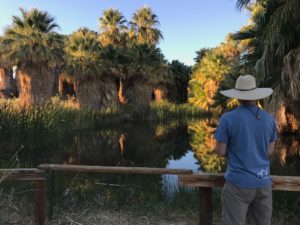You’ve been learning to avoid mold and other exposures.
Maybe you had to move or change jobs, get new belongings and leave behind old ones, be much more aware of where you go and what you do, and learn to decontaminate quickly upon exposure.
You’re diligent, but still haven’t found stability. Initially after leaving our moldy home, I would have some days feeling very good and then crash for no apparent reason…a roller coaster existence. This instability was very challenging emotionally and physically and made it hard to accurately gauge our success at times.
So, what do you try next?
First, I would consider what Lisa Petrison and Erik Johnson call the “Locations Effect”. They and other experienced people found there were many outdoor factors that could greatly affect a sensitized person. This information was invaluable to me and my husband; it was the key to our recovery. This article from Paradigm Change talks about the effect: Outdoor Toxins of Particular Relevance to Mold Avoiders
Through taking a “mold sabbatical”, my husband and I found we were sensitized to compounds in the outdoor air in our home region, as well as some other places we encountered. I give the details of these first experiences in this Honeycolony article: How I Discovered I was a Mold Warrior
Now that our ability to discern reactions is very clear, we also know that I react to toxic algae spores in the air, toxins produced in lawns and other areas that are irrigated and sprayed (versus organic farms, where I’ve not usually had problems), and to many large dairy or cattle farms, particularly CAFOs. We both usually feel ill in regions that have been sprayed with fire retardants in the past five or so years, and in areas near military bases where test bombing or chemical testing is performed.
So we chose where to look for a home based on our reactions in the outdoor location. That choice made the difference between health stability or instability. Without learning to find a good-for-us location, our lives likely would have stayed a permanent roller coaster ride.

But then what? How does one heal?
Sometimes the body will spontaneously begin healing when major stressors are removed. For some people, almost all of the stressors need to be eliminated. I wholly admit – this is very, very challenging. But now that we have our lives back, I can tell you the effort was completely worthwhile.
So what next, after you are pretty certain that you’ve found a good-enough location?
A great place to start is this list on Paradigm Change, which contains poll results compiled by Lisa Petrison from her Facebook group, Mold Avoiders: http://paradigmchange.me/wp/improved/ The polls list therapies and health approaches that have helped mold-aware people heal.
Some of the more useful things a large amount of mold-aware people have found are dealing with sinus/nasal MARCoNS or fungal infections, dietary changes, coffee enemas and saunas. Check out the poll for the full list and ratings.
Medical Help
I like to recommend free things first, because many people with chronic illness have exhausted their funds. But medical help may also be needed for recovery. It was for me and my husband.
Here is a list of medical practitioners that mold aware people voted the most helpful in their experiences. http://paradigmchange.me/wp/practitioners-2017/
My husband and I sought help from one of the doctors on that list. His nutritional therapy changed my entire physiology and made a dramatic difference for both me and my husband. However, mold avoidance and staying in good-for-us locations was absolutely critical, and still is for us today.
Our doctor used nutritional therapy, addressed fungal, parasite, and bacterial infections, and helped each organ in order to heal our overall detox systems. Now we can withstand more frequent minor water damaged building exposures, reaching the point where we’re starting to look “normal” again and have even been able to rehab our house, ourselves. For people searching for a medical solution after adopting mold avoidance, I recommend finding a practitioner who is a highly skilled nutritionist, understands the detox system and how to address co-infections.
What if you’ve tried all these things, but still haven’t been able to find a good location, haven’t found a doctor who is helping, have made dietary and lifestyle changes to control your exposures and improve general health, and have tried many of the things on the Paradigm Change polls – but still are not better?

Then what?
First, I would (and have had to) go back to the top of the list and reassess my decontamination practices and location.
Try taking trips away from your immediate region; see if you experience any improvement at all. If you live in a city, visit a national park. If you live in a forest, visit a desert or the coast. Shift your exposures even if only for a day. Hone your observation skills.
Don’t forget to test your car to make sure its not the source of your exposure. You may be able to do this from home, comparing how you feel outdoors versus using your car. Or you may need to leave your region in another vehicle, say a rental car, and decontaminate before entering that vehicle.
When testing locations, try to stay away from major industry, farming, military bases, bodies of freshwater, and major recent fire areas until you can tell if you react near them. This sort of approach may seem challenging, but I’m mentioning it first because it has been the absolute most valuable to our recovery.
When you still need something more
I can’t stress enough how critical decontamination and location is to healing from this illness. Yet, I see people who are at their wit’s end, having tried everything they can think of to the degree they are capable.
Beyond everything else I’ve mentioned, if nothing is working well enough and you are completely flummoxed as to what to try next, consider some of the more esoteric approaches with which some mold aware people have found relief.
These approaches may help in ways that might make life with toxin avoidance easier. These therapies and techniques might also have a physical effect. They are not a replacement for learning to recognize biotoxin exposures, and in and of themselves I don’t think these are the keys to healing. I did many of these things in my years before leaving mold and there were great benefits, but they did not save or cure me then.
However, sometimes we simply need other complications in our lives, bodies or psyche reduced in order to become more capable at caring for ourselves and others, at recognizing exposures, and taking more healthful steps in life. I believe these things below can help some people make useful gains.

A varied selection of examples, in no particular order:
Eye Movement Desensitization and Reprocessing (EMDR) therapy – This method has shown good success with PTSD. I’ve done this approach for PTSD and it was very effective. It helped me move on from an extremely traumatic medical event.
Neural retraining programs which may work with neural plasticity to affect biochemical processes – Some of these neural retraining programs attempt to address illness directly, others address health only indirectly. I have not tried these, but include them based on some good reports from others.
Healing ceremonies such as shamanic healing, sweat lodge ceremonies, and the Amazonian ayahuasca and kambo medicines – Each of these are very different and I believe are best suited for people with a strong attraction to practices from traditional cultures. Some of these ceremonies are very intense experiences, Kambo tending to be the most intense in my experience. I do not recommend them for a person who is still significantly ill, or anyone who has religious or ideological conflicts with these practices.
These ceremonies are probably not safe for everyone, so be sure to be honest with yourself and the practitioner about your personal considerations should you try one of these methods. My husband and I tried Kambo once we were significantly healthy and that was one of the most intense physical experiences of my life – even considering my many years of illness.
Also worth considering, sweat lodge construction can get moldy very easily; one may wish to check ahead of time and make sure you can tolerate the location/set up.
Biofeedback programs – I used one that improved my physical coordination dramatically in just one session, much to my surprise. My coordination remained significantly improved until I was re-exposed to an outdoor supertoxin. It eventually improved again (without needing more biofeedback) once I got clear of the supertoxin exposure and moved to a better-for-us region.
Cranial osteopathy – a form of osteopathy that addresses cranial and spinal fluid rhythms, as well as connective tissue functioning, and can ease certain symptoms including vision problems, migraines, and physical trauma from head injuries, surgeries and such. I did years of this therapy, along with upper cervical chiropractic work. It helped a lot with certain issues.
Reiki regression – A form of Reiki therapy for helping heal from past traumatic events. This can work for physical or emotional injuries.
Ionic Detox footbath – These devices seem to aid movement of lymph fluid. They can be very effective for some people. I found it reduced migraines during use, and reduced EMF sensitivity for me overall. More information is in this poll: http://paradigmchange.me/lc/polls/
Self-help programs and books for coping with anxiety and depression, and improving emotional health – These skills may make the challenges of dealing with this illness and its many painful facets easier. Gaining more skills such as how to talk to others about one’s needs in a calm and positive fashion, interact with people in healthier ways, and reduce the triggers surrounding this illness can be immensely helpful.
However, please note that once out of problematic exposures, some people find their psyche-emotional challenges (e.g. anxiety, nightmares, depression, resentment, overfocusing, victimization fears) resolve to a great degree on their own. That was my experience.
Links to some of these methods:
EMDR:
Veteran’s Affairs National Department for PTSD – EMDR page
EMDR International Association practitioner search
Neural Retraining:
http://limbicretraining.com/recovery-stories/how-it-works/
http://www.drjoedispenza.com/ I have read two of Dispenza’s books, and find the concepts both challenging and compelling. However, these methods weren’t what led to my or my husband’s healing. We had to find a good-for-us location.
The Wim Hoff Method may also be a neural retraining program, but is probably not doable by many/most with chronic illness. However, here is a TedTalk with Wim Hoff explaining what’s he’s learned from the research done on his physiology.
Books and programs for improving emotional health that have been recommended to me, or I have tried:
Attacking Anxiety & Depression Program, by Lucinda Bassett
The Anxiety and Phobia Workbook
The Dance of Fear, Harriet Lerner I also highly recommend the Dance of Intimacy, also by Harriet Lerner.
Photo Credit: At The End of the Rainbow, By Jessie Eastland (Own work) [CC BY-SA 4.0 (https://creativecommons.org/licenses/by-sa/4.0)], via Wikimedia Commons
